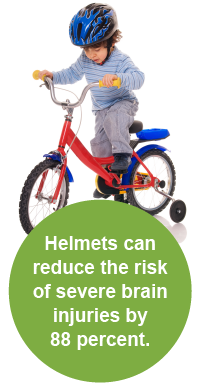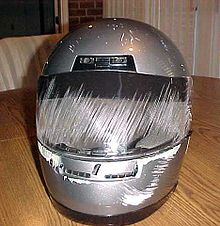TIPS ON HOW TO KEEP YOUR PROPERTY SAFE
Check Your Locks
- Make sure every external door has a strong, well-installed dead bolt lock. Key-in-the-knob locks alone are not enough.
- Sliding glass doors offer easy access if they are not properly secured. You can secure them by putting a broomstick or dowel in the inside track to jam the door or by installing commercially available locks. To prevent the door being lifted off of the track, drill a hole through the sliding door frame and the fixed frame. Then insert a pin in the hole.
- Lock double-hung windows with key locks or "pin" your windows by drilling a small hole at a 45 degree angle between the inner and outer frames, then insert a nail that can be removed. You should secure basement windows with grilles or grates (but make sure that they can be opened from the inside in case of fire).
- Never hide keys around the outside of your home. Instead, give an extra key to a neighbor you trust.
- When you move into a new house or apartment, re-key the locks.
Check Your Doors
While we all like to feel that once we close and lock our doors, we’re safe and secure, the truth of the matter is that a lock on a flimsy door is about as effective as locking your car door but leaving the window down with your wallet on the front seat.
- All outside doors should be metal or solid wood.
- Install a peephole or wide-angle viewer in all entry doors so that you can see who is outside without opening the door. Door chains break easily and don’t keep out intruders.
- If your doors don’t fit tightly in their frames, install weather stripping around them.
Check the Outside
Take a look at your home from the outside, and keep in mind the following tips to help make your home as safe as it can be:
- Burglars hate bright lights. Install outside lights and keep them on at night. Motion-detector lights can be particularly effective.
- Keep your yard clean. Prune shrubbery so it doesn’t hide windows or doors. Cut back tree limbs that a burglar could use to climb to an upper-level window.
- If you travel, create the illusion that you are at home by getting timers that will turn lights (and perhaps a television or radio) on and off in different parts of your home throughout the day and evening hours. Lights burning 24 hours a day signal an empty house.
- Leave shades, blinds, and curtains in normal positions. And make sure you don’t let your mail and/or newspapers pile up. Call the post office and newspaper to stop delivery or have a neighbor pick them up.
- Make a list of your valuables, such as VCRs, stereos, computers, and jewelry. Take pictures of the items, list their serial numbers and description or better yet video each room in your house, don't forget the garage, and use the camera's audio to record a description and serial number. Put the video tape in a safety deposit box, don't leave it in the camera. This will help police if your home is burglarized.
- Ask your Mount Juliet Police Department if they offer a free home security survey.
- When getting work done on your vehicle, leave only the vehicle key for the service personnel. The same goes for car park attendants and valets.
- If you are having work done on your vehicle, give the service station your business address – not your home address.
Burglars Can Do More Than Just Steal
While most burglars prefer to strike when no one is home, intruders can commit other crimes such as rape, robbery, and assault if they are surprised by someone entering the home, or if they pick a home that is occupied.
- If something looks questionable – a slit screen, a broken window or an open door – don’t go in. Call the police from a neighbor’s house, a cell phone, or a public phone.
- At night, if you think you hear someone breaking in, leave safely if you can, then call the police. If you can’t leave, lock yourself in a room with a phone and call the police.
- One other important note – never leave a message on your answering machine that indicates that you may not be at home, or that you live alone. Instead, say “We’re not available right now.”
What If I Live in an Apartment?
While apartment living is a little different from living in a single family home, there are still some additional things that you can do to make sure that you, your loved ones, and your property remain safe and secure. Similar to Neighborhood Watch, members of an Apartment Watch learn how to make their homes more secure, watch out for one another and members of the community, and report crime and suspicious activity to the police. Some things you can do:
- Never let anyone you don’t know into your building or past security doors.
- Work with the management to organize citizen patrols to walk around the apartment complex and alert police to crime and suspicious activities. Don’t forget to patrol parking lots, stairways, laundry rooms, and playgrounds.
- Publish a newsletter that gives local crime news, recognizes Apartment Watch captains, and highlights community activities.
- Have a reception in the lobby of your building or a cookout on common property so neighbors can get to know one another.
- Start a Safe Haven Program for children – places where they can go in emergency or scary situations.
- Check the complex on a regular basis for problems such as burned-out light bulbs, dark corridors, uncollected trash, or broken locks on mailboxes and doors. Report any such problems to the building manager. Keep pressure on management to make sure it provides adequate security.
- Organize meetings to brainstorm how you can help each other, such as starting an escort service for the elderly.
Thefts from Autos
One of the most common types of theft is theft of valuables from your automobile. Theft from auto is strictly a crime of opportunity that can be prevented if you take away the opportunity. Thieves generally won’t waste their time breaking into autos that don’t have valuables in plain sight.
Recently, the Mount Juliet Police Department has recorded an increase in thefts from autos, particularly in areas across Mount Juliet known for their fashionable stores, popular restaurants and trendy bars. Cars parked near sporting venues when games or concerts are scheduled may also be targeted. If you plan on parking your car in a neighborhood that is known for its numerous visitors, remember thieves know these areas are popular, too. Certain neighborhoods are targeted due to easy in and out access. Be sure to either take valuable property with you or secure it properly. The Mount Juliet Police Department places a high value on you and your property. Please take the precautions listed below to help ensure your auto is not targeted by thieves:
Keep Your Valuables Out of Sight
The best way to prevent theft from your auto is to always keep valuables out of sight. Never leave cell phones, briefcases, suitcases, or electronic devices (cell phones, iPods, laptop computers, etc.) in your car in plain view. Take these items with you, or secure them—all the time, every time.
Secure Your GPS Device
While many GPS devices are mounted in the dashboard of the vehicle, the Mount Juliet Police Department encourages anyone who uses a portable GPS device to take it with you, along with any other items of value, when you park the car, or secure it in the trunk. Remember a GPS Device mounted on the front windshield of a parked vehicle, home or away, is a visible advertisement for a thief.
Use Your Trunk
If your car has a trunk, use it. Put valuables in there or in a locked glove compartment. Hiding items under seats is better than leaving them in plain view, but securing them inside the glove compartment or trunk is a far better deterrent. Remember, thieves are lazy, the longer it takes to enter a vehicle or trunk the better deterrent.
Don't Tempt Thieves with New Purchases
During the holiday season especially, or any time you’re shopping, place packages in the trunk, not on the passenger seats or floors.
Remove Your Radio Faceplate
If you can unfasten your sound system and take it with you, or lock it in your trunk, do so. And don’t forget to do the same with your CDs.
Lock It Up
Also, keep your car doors and windows locked—all the time! The Police Department has taken many a report where the vehicle was parked in the driveway, unlocked.
For more tips on specific theft prevention topics use your computer's search to look for burglary safety tips.
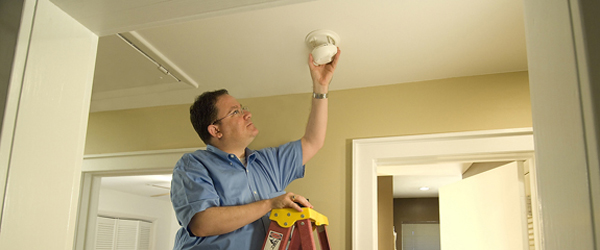 Caregivers are encouraged to check the smoke alarms of those who are unable to do it themselves.
Caregivers are encouraged to check the smoke alarms of those who are unable to do it themselves.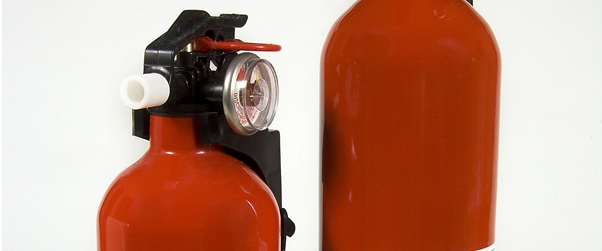 Sleep with your door closed.
Sleep with your door closed.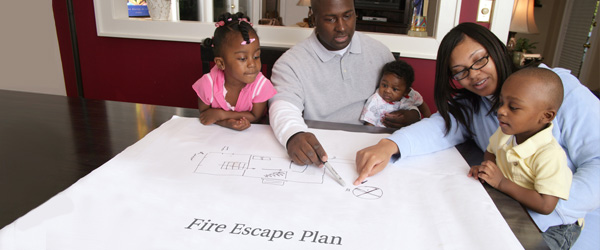 Make sure windows are not nailed or painted shut. Make sure security gratings on windows have a fire safety opening feature so they can be easily opened from the inside.
Make sure windows are not nailed or painted shut. Make sure security gratings on windows have a fire safety opening feature so they can be easily opened from the inside.